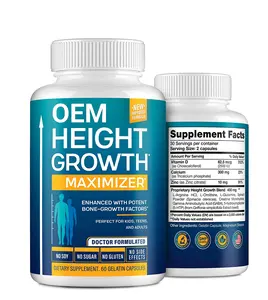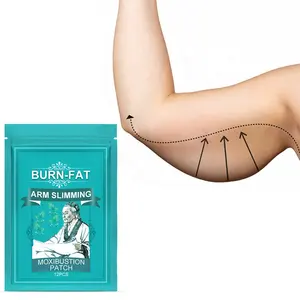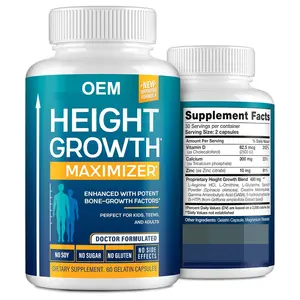ได้รับความนิยมในอุตสาหกรรมของคุณ






ที่กําหนดเองขึ้นรูปยูรีเทนสายพานลําเลียงเครื่องขูดทําความสะอาดสวมใส่ที่ทนทานการทําเหมืองแร่สายพานลําเลียงเครื่องทําความสะอาดสายพานแปรงมอเตอร์
฿5,925.58 - ฿6,851.45
การสั่งซื้อขั้นต่ำ: 1 ชิ้น
การจัดส่งต่อชิ้น: ฿4,850.83







Pu Pu Pu ลิฟต์กระโดดแบบพกพาปีนเขาเอียงเข็มขัดลำเลียงเข็มขัดเอียงสายพานลำเลียงสำหรับอุตสาหกรรมอาหาร
฿12,962.20 - ฿16,665.68
การสั่งซื้อขั้นต่ำ: 1 ชุด







สายพานลำเลียงอุตสาหกรรมแบบกำหนดเองกระบอกไนล่อนแปรงลูกกลิ้งสำหรับทำความสะอาด
฿95.55 - ฿1,143.64
การสั่งซื้อขั้นต่ำ: 10 ชิ้น







ปรับความสูงที่สามารถเคลื่อนย้ายแร่ยางเคาน์เตอร์สายพานลำเลียงสำหรับรถบรรทุกโหลด
฿29,627.88 - ฿33,331.36
การสั่งซื้อขั้นต่ำ: 1 ชุด







แปรงฟินสภาพอากาศอุตสาหกรรมแปรงลวดเหล็กขนาดเล็กพร้อมแถวคู่
฿110.74 - ฿258.88
การสั่งซื้อขั้นต่ำ: 2 ชิ้น







แปรงทำความสะอาดสายพานอุตสาหกรรมแบบกำหนดเองลูกกลิ้งลำเลียงแปรงลูกกลิ้งไนลอนสำหรับทำความสะอาด
฿95.55 - ฿354.80
การสั่งซื้อขั้นต่ำ: 1 ชิ้น






ความต้านทานการสึกหรอสูงถ่านหินแปรงปรับเข็มขัดสำหรับทำความสะอาดสายพานลำเลียงยางทำความสะอาดสายพานลำเลียงสายพานลำเลียงลูกกลิ้งแปรง
฿3,703.49 - ฿37,034.84
การสั่งซื้อขั้นต่ำ: 1 หน่วย





ต่ําความเร็วกลองมอเตอร์ราคาสายพานลําเลียง 300 มม.bldcกลอง Roller มอเตอร์สายพานลําเลียงแปรง 24v 48v dcกลองมอเตอร์แปรงสําหรับ convair
฿6,481.10 - ฿6,666.28
การสั่งซื้อขั้นต่ำ: 2 ชิ้น
การจัดส่งต่อชิ้น: ฿318.50






TDF สายพานลำเลียงไนลอนอุตสาหกรรมแปรงลูกกลิ้งทำความสะอาดกระบอก
฿2,592.44 - ฿3,147.97
การสั่งซื้อขั้นต่ำ: 1 เมตร






โรตารี่มอเตอร์แปรงเข็มขัดทำความสะอาดสายพานลำเลียงแปรงทำความสะอาด
฿21,850.56 - ฿22,220.91
การสั่งซื้อขั้นต่ำ: 10 ชิ้น
การค้นหาที่เกี่ยวข้อง:
แปรงลำเลียงผู้จัดจำหน่ายแปรงลำเลียงแปรงลำเลียงเกลียวแปรงทำความสะอาดสายพานลำเลียงแปรงโรตารี่สายพานลำเลียงแปรงทำความสะอาดลูกกลิ้งลำเลียงลูกกลิ้งแปรงลำเลียงอุตสาหกรรมแปรงทำความสะอาดสายพานลำเลียงแปรงลำเลียงทรงกระบอกสายพานลำเลียงแปรงทำความสะอาดแปรงทำความสะอาดลูกกลิ้งผู้ค้าส่งคู่มือลำเลียงแปรงรถไฟผู้จัดจำหน่ายแปรงลำเลียงแปรงลำเลียงเกลียวแปรงลูกกลิ้งสายพานลำเลียง






แปรงทำความสะอาดสายพานลำเลียงระบบทำความสะอาดสายพานลำเลียงสกรู
฿129.26 - ฿925.51
การสั่งซื้อขั้นต่ำ: 50 ชิ้น












กระบอกเกลียวอุตสาหกรรมแปรงโรตารีสายพานลำเลียงแปรงลูกกลิ้งทำความสะอาด
฿722.18 - ฿1,207.34
การสั่งซื้อขั้นต่ำ: 100 ชิ้น








ไนลอนสีดำแปรงลูกกลิ้งสำหรับสายพานลำเลียงเครื่องทำความสะอาด
฿3,703.49 - ฿14,813.94
การสั่งซื้อขั้นต่ำ: 1 ชิ้น






แปรงสายพานลำเลียงไนล่อนแบนแบบยืดหยุ่นมาตรฐานสำหรับอุตสาหกรรมสิ่งทอ
฿58.52 - ฿354.80
การสั่งซื้อขั้นต่ำ: 1 เมตร






อุตสาหกรรมแปรง Roller TDF อุตสาหกรรมไนล่อนสายพานลำเลียงผลไม้ผักทำความสะอาดแปรง
฿1,036.98 - ฿1,111.05
การสั่งซื้อขั้นต่ำ: 500 ชิ้น






แปรงลูกกลิ้งทรงกระบอกไนล่อนนุ่มแข็งแบบกำหนดเองสำหรับการทำความสะอาดสายพานลำเลียง
฿1,366.59 - ฿1,477.70
การสั่งซื้อขั้นต่ำ: 2 ชิ้น






แปรงสายพานลำเลียงแปรงทำความสะอาดสายพานยืดหยุ่นสำหรับเครื่อง
฿74.07 - ฿184.81
การสั่งซื้อขั้นต่ำ: 10 เมตร




แปรงขัดสายพานสำหรับทำความสะอาดสายพานลำเลียงแบบซิงโครนัส
฿114.81 - ฿185.18
การสั่งซื้อขั้นต่ำ: 100 ชิ้น






สายพานลำเลียงไนล่อนขนแปรงสายพานแปรงสำหรับอุตสาหกรรมสิ่งทอ
฿296.28 - ฿407.39
การสั่งซื้อขั้นต่ำ: 5 เมตร






ไนลอนอุตสาหกรรมทรงกระบอกแผงสายพานลำเลียงแก้วผลไม้แปรงทำความสะอาดผัก
฿370.35 - ฿1,111.05
การสั่งซื้อขั้นต่ำ: 1 ชิ้น






TDF สายพานลำเลียงไนล่อนอุตสาหกรรมลูกกลิ้งแปรงทำความสะอาดแปรงลูกกลิ้ง
฿703.30 - ฿1,481.03
การสั่งซื้อขั้นต่ำ: 2 ชิ้น






สายพานลําเลียงทําความสะอาดขนไนลอนสีตกแต่งคุณภาพสูงลูกกลิ้งขนเส้นผ่านศูนย์กลาง 18 มม. แปรงอุตสาหกรรม
฿12.97 - ฿14.82
การสั่งซื้อขั้นต่ำ: 1000 ชิ้น
การจัดส่งต่อชิ้น: ฿24.08






แปรงทําความสะอาดเข็มขัดอุตสาหกรรมราคาโรงงานลูกกลิ้งลําเลียงกระบอก แปรงลูกกลิ้งไนลอนสําหรับทําความสะอาด
฿132.96 - ฿333.32
การสั่งซื้อขั้นต่ำ: 10 ชิ้น






แปรงทำความสะอาดสายพานลำเลียงสำหรับการจัดการวัสดุจำนวนมากระบบสายพานลำเลียงทำความสะอาดสายพานหลัก
฿3,703.49 - ฿37,034.84
การสั่งซื้อขั้นต่ำ: 100 ชิ้น






แปรงไนลอนทรงกระบอกแปรงสายพานลำเลียงแปรงทำความสะอาดลูกกลิ้ง
฿7,406.60 - ฿10,369.39
การสั่งซื้อขั้นต่ำ: 2 ชิ้น






แปรงทำความสะอาดสายพานลำเลียงแปรงเหล็กไนล่อน
฿36,664.50 - ฿37,034.84
การสั่งซื้อขั้นต่ำ: 1 ชุด
การจัดส่งต่อชิ้น: ฿5,747.07





ลูกกลิ้งสายพานลำเลียงทนทานต่อการสึกหรอ,อุปกรณ์ปรับแต่งได้
฿185.18 - ฿333.32
การสั่งซื้อขั้นต่ำ: 5 เมตร






มอเตอร์ดรัมสายพานลำเลียง300มม. ความเร็วต่ำมอเตอร์ดรัมแปรงถ่าน220V AC มอเตอร์สำหรับ convayer
฿3,666.45 - ฿4,629.36
การสั่งซื้อขั้นต่ำ: 10 ชุด












Usehom TDF ระบบทําความสะอาดสายพานลําเลียง สกรูลําเลียง แปรงทําความสะอาดสปริง
฿966.24 - ฿1,481.03
การสั่งซื้อขั้นต่ำ: 2 ชิ้น






แปรงทำความสะอาดสายพานลำเลียงสำหรับทำความสะอาดสายพานลำเลียงวัสดุจำนวนมาก
฿5,555.23 - ฿11,110.46
การสั่งซื้อขั้นต่ำ: 1 ชิ้น






สายพานลําเลียงอุตสาหกรรมสิ่งทอ แปรงสายพานลวดเหล็กขนนิลอน Bristle
฿296.28 - ฿407.39
การสั่งซื้อขั้นต่ำ: 10 เมตร
การจัดส่งต่อชิ้น: ฿370.35






แปรงสายพานไนลอนขัดแบบกําหนดเอง แปรงทําความสะอาดการหมุนสายพานลําเลียงแบบยืดหยุ่นสําหรับการทําความสะอาดและกําจัดสนิม
฿585.16 - ฿959.21
การสั่งซื้อขั้นต่ำ: 10 ชิ้น
การจัดส่งต่อชิ้น: ฿260.36






แปรงสำหรับสายพานลำเลียง B500mm ทำความสะอาดสายพานด้วยมีดโกนโลหะผสม Dia.133 * 525
พร้อมส่ง
฿962.91 - ฿981.43
การสั่งซื้อขั้นต่ำ: 3 ชิ้น
การจัดส่งต่อชิ้น: ฿632.56
หมวดหมู่ยอดนิยม
เกี่ยวกับ แปรงสายพานลำเลียง
แปรงสายพานลำเลียง ไม่ใช่เรื่องใหม่สำหรับคนทั่วไปในปัจจุบันและไม่ถือว่าเป็นสิ่งต้องห้ามอีกต่อไป หากคุณกำลังมองหาความสุขสุดท้ายนี้คุณต้องตรวจสอบความยิ่งใหญ่ คอลเลกชัน แปรงสายพานลำเลียง ที่ Alibaba.com เหล่านี้ยั่วยวนและโค้ง แปรงสายพานลำเลียง คุ้มค่ากับเงินทุกบาทและมั่นใจว่าจะทำให้ค่ำคืนนี้พิเศษสำหรับคุณ ตุ๊กตาเหล่านี้มีลักษณะเหมือนจริงตั้งแต่ขนไปจนถึงปลายเท้าในทุกแง่มุม
ไม่ว่าคุณจะเป็นคนขี้เหงาที่กำลังมองหาคู่ชีวิตที่เหมือนมีชีวิตหรือคู่รักที่ต้องการเติมชีวิตชีวาให้กับชีวิตคุณสามารถใช้สิ่งเหล่านี้ได้ . แปรงสายพานลำเลียง สำหรับจุดไฟนั้น ที่งดงามเหล่านี้ แปรงสายพานลำเลียง สามารถปรับแต่งได้ตามความคาดหวังของคุณ น่าทึ่งเหล่านี้ แปรงสายพานลำเลียง มีให้เลือกทั้งชายและหญิงและทำจากซิลิโคนเกรดยาเพื่อความปลอดภัยในการใช้งาน รับตอนนี้และเพลิดเพลินไปกับค่ำคืนแห่งความหลงใหลและไฟ
Alibaba.com ขอเสนอสิ่งที่น่าทึ่งเหล่านี้ แปรงสายพานลำเลียง ในทุกรูปร่างขนาดและชาติพันธุ์ ไม่ว่าความต้องการของคุณสำหรับไฟล์. แปรงสายพานลำเลียง คุณสามารถหาได้ทั้งหมดบนไซต์ เหล่านี้ แปรงสายพานลำเลียง ได้รับการขึ้นรูปโดยช่างฝีมือที่ดีที่สุดและทุกรายละเอียดที่ซับซ้อนจะได้รับการตรวจสอบอย่างละเอียด ตุ๊กตาเหล่านี้มีดวงตาผมเล็บและส่วนอื่น ๆ ของร่างกายคล้ายกับคนในชีวิตจริง
Alibaba.com ให้บริการที่หลากหลาย แปรงสายพานลำเลียง ที่สามารถช่วยคุณซื้อผลิตภัณฑ์ที่เหมาะสมกับงบประมาณของคุณและข้อกำหนดอื่น ๆ ผลิตภัณฑ์เหล่านี้ปลอดภัยต่อการใช้งานได้รับการรับรองและเป็นมิตรกับสิ่งแวดล้อม มีคำสั่งซื้อ OEM สำหรับผลิตภัณฑ์เหล่านี้
ไม่ว่าคุณจะเป็นคนขี้เหงาที่กำลังมองหาคู่ชีวิตที่เหมือนมีชีวิตหรือคู่รักที่ต้องการเติมชีวิตชีวาให้กับชีวิตคุณสามารถใช้สิ่งเหล่านี้ได้ . แปรงสายพานลำเลียง สำหรับจุดไฟนั้น ที่งดงามเหล่านี้ แปรงสายพานลำเลียง สามารถปรับแต่งได้ตามความคาดหวังของคุณ น่าทึ่งเหล่านี้ แปรงสายพานลำเลียง มีให้เลือกทั้งชายและหญิงและทำจากซิลิโคนเกรดยาเพื่อความปลอดภัยในการใช้งาน รับตอนนี้และเพลิดเพลินไปกับค่ำคืนแห่งความหลงใหลและไฟ
Alibaba.com ขอเสนอสิ่งที่น่าทึ่งเหล่านี้ แปรงสายพานลำเลียง ในทุกรูปร่างขนาดและชาติพันธุ์ ไม่ว่าความต้องการของคุณสำหรับไฟล์. แปรงสายพานลำเลียง คุณสามารถหาได้ทั้งหมดบนไซต์ เหล่านี้ แปรงสายพานลำเลียง ได้รับการขึ้นรูปโดยช่างฝีมือที่ดีที่สุดและทุกรายละเอียดที่ซับซ้อนจะได้รับการตรวจสอบอย่างละเอียด ตุ๊กตาเหล่านี้มีดวงตาผมเล็บและส่วนอื่น ๆ ของร่างกายคล้ายกับคนในชีวิตจริง
Alibaba.com ให้บริการที่หลากหลาย แปรงสายพานลำเลียง ที่สามารถช่วยคุณซื้อผลิตภัณฑ์ที่เหมาะสมกับงบประมาณของคุณและข้อกำหนดอื่น ๆ ผลิตภัณฑ์เหล่านี้ปลอดภัยต่อการใช้งานได้รับการรับรองและเป็นมิตรกับสิ่งแวดล้อม มีคำสั่งซื้อ OEM สำหรับผลิตภัณฑ์เหล่านี้



































